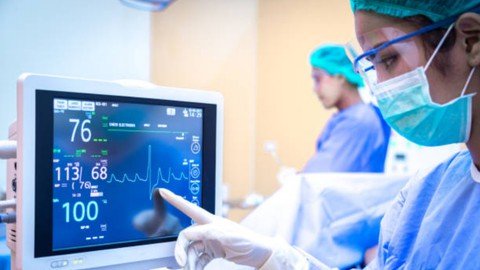
Last updated 1/2022
MP4 | Video: h264, 1280x720 | Audio: AAC, 44.1 KHz
Language: English | Size: 325.45 MB | Duration: 0h 35m
Complete examination knowledge for unconscious patient
What you'll learn
In this course I will teach you examination of unconscious patient
Introduction of unconscious patient or coma with how to take history
Systemic examination
Investigation with basic treatment knowledge
Requirements
Pc,mobile,laptop
Description
In this course I will teach you to examination of unconscious patient1.introduction of examination of unconscious patient2.pathophysiology of unconscious patient3.general physical examination4.systemic examination5.investigationWhat Is a Coma?A coma is a prolonged state of unconsciousness. During a coma, a person is unresponsive to their environment. The person is alive and looks like they are sleeping. However, unlike in a deep sleep, the person cannot be awakened by any stimulation, including pain.What Causes a Coma?Comas are caused by an injury to the brain. Brain injury can be due to increased pressure, bleeding, loss of oxygen, or buildup of toxins. The injury can be temporary and reversible. It also can be permanent.Coma Like Syndromes1) Vegetative state: This is state of coma in which the eyelids have, after a time, opened giving the appearance of wakefulness. There is an absolute absence of response to commands and an inability to communicate. This is also called 'awake coma'. There may be yawning, grunting and random movements of limbs and head. There are accompanying signs of extensive bilateral cortical damage.2) Akinetic mutism: It refers to the state of partial or full wakefulness in which patient lies immobile with eyes open and is unable to talk. It results from hydrocephalus, mass in the region of third ventricle, bilateral frontal lobe lesions.3) Locked in state: It is a state of pseudo coma in which patient appears to be unconscious, immobile and unresponsive but can open and move the eyes on command. Often these patients communicate with movements of eyes, a form of 'sign language'. These individuals are thus "locked in, or imprisoned within their own bodies." It results from infarction or haemorrhage of ventral pons due to basilar artery occlusion.3) Coma vigil: It indicates a state of impaired consciousness with muttering. The unconsciousness is not such as to amount coma. It is observed in infectious fevers such as typhoid, dengue or pneumonia.4)Catatonia: It is hypo mobile syndrome associated with major psychosis. In its typical form, the patients appear awake with eyes open but make no voluntary or responsive movements, although they blink spontaneously and may not appear distressed. The characteristic feature is that the limbs maintain their posture when lifted or moved by the examiner.5) Hysterical pseudo coma: It indicates voluntary attempt to appear comatose. Patients resist to examination. Eyelid elevation is actively resisted. Blinking occurs to visual threat when the lids are held open. The eyes move concomitantly with head rotation. All these signs belie brain damage.
Overview
Section 1: Introduction
Lecture 1 Introduction of The Examination of Unconscious Patient
Lecture 2 Definition of coma
Lecture 3 Pathophysiology and cause of coma
Lecture 4 General physical examination
Lecture 5 Systemic examination 1
Lecture 6 Systemic examination 2
Lecture 7 Systemic examination 3
Lecture 8 Basic knowledge about treatment
All students
Homepage
https://www.udemy.com/course/the-examination-of-unconscious-patient/
https://rapidgator.net/file/cf8839b153ecf1b1da531721ec42fca6/ilgbl.The.Examination.Of.Unconscious.Patient.rar.html

https://nitro.download/view/2F77C53E827380F/ilgbl.The.Examination.Of.Unconscious.Patient.rar

https://uploadgig.com/file/download/0a737E5F8f0d18C6/ilgbl.The.Examination.Of.Unconscious.Patient.rar
